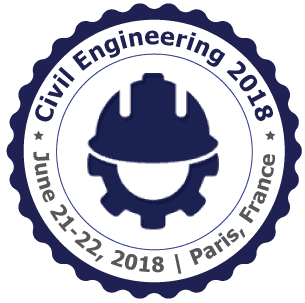
Farhad Mohammad
Kurdistan Regional Government/Council of ministers
Title: Behavior of continuous or semi-continuous steel-concrete composite beams
Biography
Biography: Farhad Mohammad
Abstract
Composite steel-concrete beams have been widely used in the design and construction of modern steel framed buildings. A steel-concrete structural beam consists of a steel structure as the major and concrete as the minor part. It can be achieved by a steel beam overlaid by a concrete slab, in which the connection between steel and concrete is achieved by using mechanical shear connectors (shear studs). Several methods have been introduced to construct steel-concrete composite beams as shown in figure 1 (Uy, 2007). The idea of composite sections refers to the development of shear connectors in the 1950’s which has made practicable to connect the concrete slabs to the steel beams (Johnson, 1994). Rae et al., 2011 conduct a study to examine the steel-concrete composite structural frames. Dubai (2007) finds experimentally that shear connectors can be used partially in composite structural beams. Indeed, the composite steel-concrete structural beams should be studied under diverse loading conditions. For analyzing the composite beams under combined bending and shear stress there are not adequate references; even codes and standards do not cover this issue adequately (Liang et al., 2004).
There is no doubt that concrete is strong enough in compression and steel in tension. However, regarding the composite steel-concrete beams, in the sagging moment locations where the steel is subjected to compression and concrete subjected to tension, it needs to be investigated conservatively.
Mainly, this research investigates the behavior of continuous or semi-continuous beam at the negative moment locations. The loading condition of combined bending and shear will be covered. This work tries to investigate the problem numerically (Finite Element Method) using the computer software ANSYS, and the results will be compared with existing experimental data. FE models will be constructed to investigate the reliability of the simulation of composite steel-concrete structural beams.

